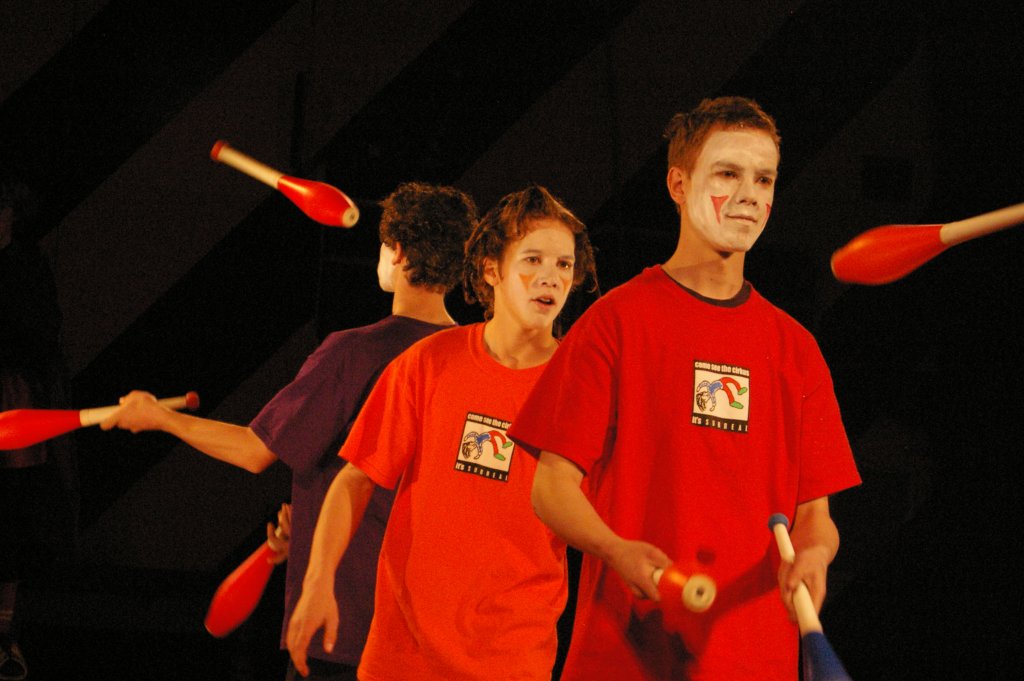I already had a Kudo Box article, and physical kudo cards. Now there is an…

Multitasking Is Bad, Multiprojecting Is Good
I often read the advice that you should only work on one thing at a time. But many people confuse multitasking with multiprojecting.
Here are some of the projects I worked on yesterday:
- I am editing and republishing excerpts from my #Workout book on various websites and networks, such as LinkedIn and Medium. Yesterday, I submitted an excerpt for publication on Huffington Post.
- I am professionalizing my public speaking profile, which started with the creation of a new website. Yesterday, I made a new Statement of Work document for all my future clients.
- I have started organizing Happy Melly Coffee sessions, where I discuss great questions with Happy Melly members. Yesterday, I announced the next meeting for Friday afternoon.
- I am developing a new measurement practice as an alternative to OKRs. Yesterday, I collected metrics about my website, blog, social networks, and speaking engagements.
- I am creating a transformation proposal for large customers who want more from me than just a one-hour speech. Yesterday, I started transforming my notes into a nice-looking slide deck.
- I am creating new content modules for Management 3.0 events. Yesterday, I researched third-party articles and videos on the topics of values and culture.
- I am developing a knowledge base for Management 3.0 facilitators. Yesterday, I wrote a template marketing plan based on my own marketing experiences.
- I am always reading about things that interest me. Yesterday, I read a few chapters of the book The End of Jobs.
- I am always writing about things that interest me. Yesterday, I was writing about multitasking and multiprojecting.
- I keep trying to improve my health, physically and mentally. Yesterday, I had a 10K run in the forest.
As you can see, I have at least ten projects going on, and that’s just the work-related side of my day. I won’t bore you with the details of cleaning up our apartment in Brussels, remote-managing the replacement of a fridge in Rotterdam, and evaluating/sorting thousands of MP3 files.
That is not multitasking!
Multitasking (or task-switching) is answering the phone while driving your car. It’s replying to Facebook messages while writing a blog post. It’s answering your manager’s questions while fixing a bug. Multitasking (or task-switching) is not good for you. In fact, it’s bad, bad, bad! Bad for your productivity, bad for your health, and bad for your safety.
Tim Harford wrote a fantastic article about it here: Multi-tasking – How to Survive in the 21st Century
But multiprojecting (or project-switching) is good!
The benefits of working on different projects are increased creativity (cross-pollinating ideas between projects speeds things up), increased flexibility (doing something else while waiting for others speeds things up), and increased motivation (having a variety of work during the day is less tiresome and, again, speeds things up). Multiprojecting enables higher productivity. And besides, for many projects it’s just impossible to focus on the same work all day long. (Try writing blog posts eight hours per day–you’ll see!)
Of course, you should do multiprojecting (or project-switching) in a smart way. I use my chunking technique to make sure that I keep my focus on one task for anywhere between 10 to 60 minutes. No emails, no phone, no Twitter updates. Then I take a little break to defocus. (“Hello world! What happened?”) And then I switch to focus on another task from another project. Because I have such a variety of ongoing projects, I can keep my motivation for 10 or more hours per day. Every hour is different!
It’s easier to think outside the box if the box is full of holes. And it’s also easier to think outside the box if you spend a lot of time clambering between different boxes.– Tim Harford, Multi-tasking: How to Survive In the 21st Century
Doesn’t that mean that the lead time for completing projects increases? Of course! But my stakeholders don’t care, and neither do I. Shorter delivery times aren’t the only way to create value. I am not Amazon.
People often wonder how I can be so productive. The answer is simple: I am a relentless multi-projecter, which gives me increased creativity, flexibility, and motivation. A lot of projects will finish. It just takes a little while.
Whenever someone warns you that you shouldn’t be working on different things, because it’s bad for your productivity, tell them the problem is multitasking, not multiprojecting.
How about you? Are you a proud multi-projecter?
p.s. I did not check my Twitter, Facebook or Slack streams while writing or publishing this post. I’m a multi-projecter, not a multi-tasker.
Image: (c) 2007 Peter Shanks, Creative Commons







